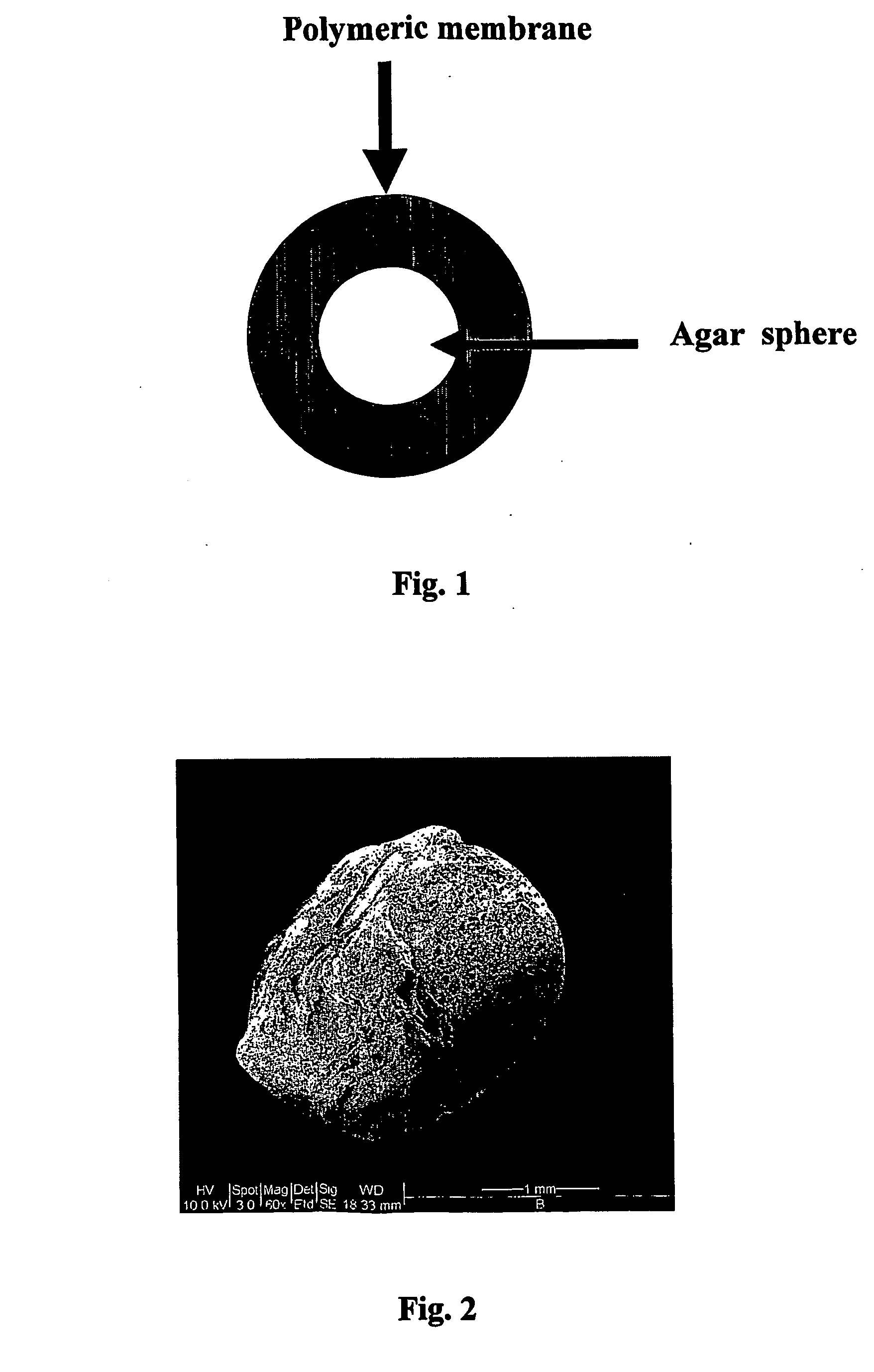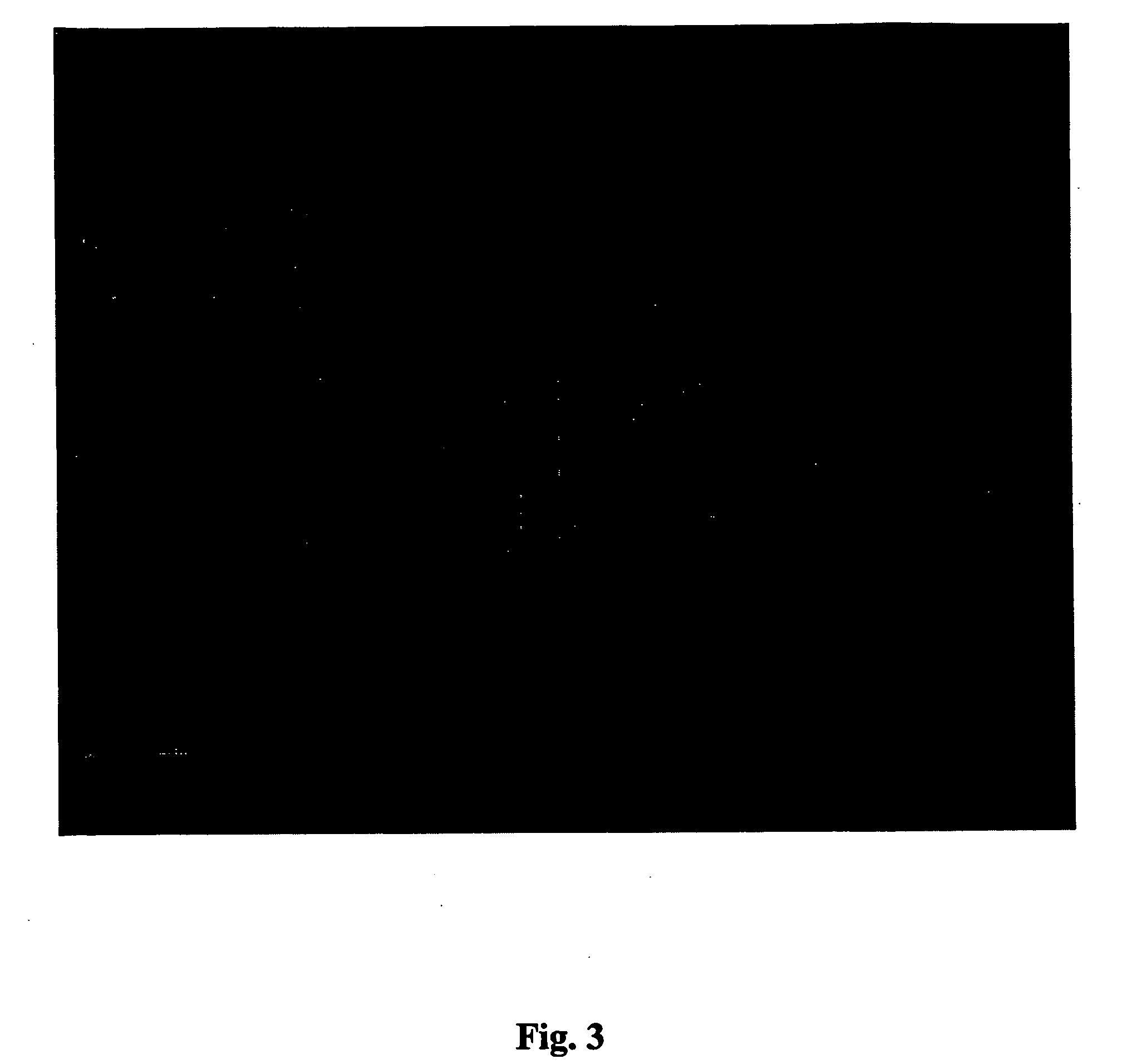Method for isolating and culturing unculturable microorganisms
a microorganism and uncultivable technology, applied in the field of isolating and culturing novel “ uncultivable” microorganisms, can solve the problems of small percentage (less than 1%) of viable bacteria in soil and restricted cell movemen
- Summary
- Abstract
- Description
- Claims
- Application Information
AI Technical Summary
Benefits of technology
Problems solved by technology
Method used
Image
Examples
example 1
Laboratory Scale Wastewater Bioreactor
[0054] An environmental sample was obtained from laboratory scale wastewater bioreactor (waste water from Ramat Hovav Toxic Waste Dumping Site, Negev, Israel) and estimated for microorganism number by DAPI-staining and microscope direct counting (108-109 cell / mL). The sample was diluted 8- and 9-fold with water in order to entrap approximately one microorganism in one agar sphere.
[0055] The diluted samples were mixed with warm (50° C.) autoclaved agar (DIFCO) (900 μl agar per 100 μl diluted sample, final concentration 1.5% agar). Agar spheres of approximately 1-2 mm in diameter containing the entrapped microorganism(s) were formed by dripping droplets of the mixture into cold mineral oil.
[0056] A solution of 10% polysulfone of m.w. ca. 35,000 (Sigma-Aldrich, Product No. 42,830-2) in DMF was prepared and used to coat the dried agar spheres containing the entrapped microorganism(s). For this purpose, the agar spheres were introduced into the po...
example 2
Microbial Communities Inhabiting Coral Mucus
[0059] Mucus of coral heads from the Red Sea was sampled by collecting ca. 1 ml−1 in a sterile disposable 50-ml polypropylene centrifuge tube. Mucus bacteria were counted directly under phase microscopy. Mucus was diluted by sterile seawater and placed on marine agar for culturable colony forming units (CFU). Several dilutions (10−7, 10−6, 10−5 and 10−4) were mixed with 2% marine agar in ratio 1 to 1 and agar spheres were coated with polysulphone and incubated in a seawater aquarium containing corals for several weeks. Agar spheres of approximately 1-2 mm in diameter containing the entrapped microorganism(s) were formed by dripping droplets of the mixture into cold mineral oil.
[0060] A solution of 10% polysulfone of m.w. ca. 35,000 (Sigma-Aldrich, Product No. 42,830-2) in DMF was prepared and used to coat the dried agar spheres containing the entrapped microorganism(s). For this purpose, the agar spheres were introduced into the polymer ...
example 3
Microbial Communities Inhabiting Soil
[0069] A sample was collected from the soil of the Halutza region, Negev, Israel, and processed as described in Example 2. The medium was sterile tapwater and the incubation of the polysulfone-coated agar spheres was carried out in pots filled with soil material from the Halutza region. A clone library constructed from agar spheres (10 colonies) inoculated with the soil bacteria was incubated for 3 weeks, analyzed as described above and revealed two different patterns by RFLP by ratio 9 to 1. DNA from two clones were partially sequenced by using direct (8F) and reversed (1512R) primers and microorganism identification was based on comparison of these sequences with the GenBank database.
[0070] The most abundant sequence (90%) of this sample of soil bacteria is characterized by partial 16S rDNA sequences of SEQ ID NO:9 and SEQ ID NO:10, that represent Proteobacteria (phylum), Betaproteobacteria (class), Burkholderiales (order), Alcaligenaceae (fa...
PUM
| Property | Measurement | Unit |
|---|---|---|
| size | aaaaa | aaaaa |
| size | aaaaa | aaaaa |
| thickness | aaaaa | aaaaa |
Abstract
Description
Claims
Application Information
 Login to View More
Login to View More - R&D
- Intellectual Property
- Life Sciences
- Materials
- Tech Scout
- Unparalleled Data Quality
- Higher Quality Content
- 60% Fewer Hallucinations
Browse by: Latest US Patents, China's latest patents, Technical Efficacy Thesaurus, Application Domain, Technology Topic, Popular Technical Reports.
© 2025 PatSnap. All rights reserved.Legal|Privacy policy|Modern Slavery Act Transparency Statement|Sitemap|About US| Contact US: help@patsnap.com


